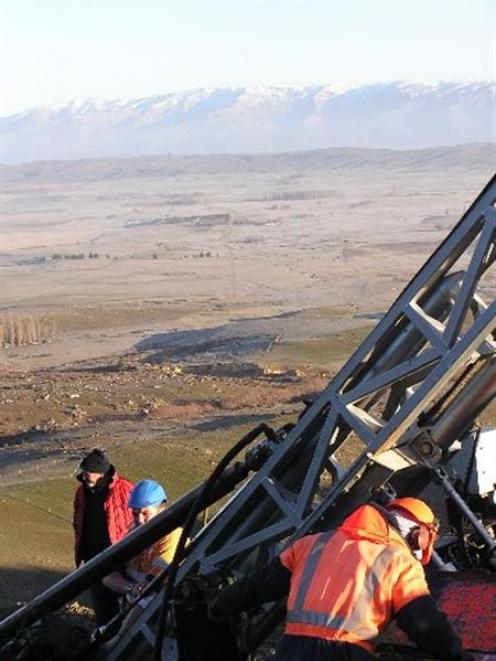
While Glass Earth, listed on the mining-friendly Toronto stock exchange and the New Zealand exchange's alternative board, has about $NZ4 million cash-in-hand, the high costs of drilling programmes suggest it may need to go back to the market for capital some time soon.
"We can only capital raise on the back of good [drilling] results. Our total focus is the drilling programmes at present," Glass Earth chief executive Simon Henderson said when contacted yesterday, Glass Earth raised $10 million when it floated in October 2006 and a further $6.3 million in Toronto last August.
Henderson confirmed yesterday the company still had about $4 million in working capital in the bank.
Glass Earth has released some preliminary Otago ground sampling results but is yet to release any results from its aerial survey, while the first results of assays from its just-commenced test drilling programme will be several months away.
Since completion of the Otago aerial surveys covering 1.3 million hectares in September last year, Glass Earth geological teams had taken a total 5500 soil samples, 600 rock chip samples and 700 stream sediment samples, covering 24 potential gold prospects, chief executive Simon Henderson said yesterday.
All the samples had been assayed during the past eight months, which led to five prospects singled out for test drilling and a further 19 identified to be followed up.
"Several teams, totalling 20 field staff, have spent the past eight months undertaking soil, rock chip and stream sediment sampling combined with geological mapping," Mr Henderson said yesterday.
Drilling has begun at the Sparrow Hawk prospect, about 20km south of Omakau in Central Otago, with up to three holes in three different zones totalling 1000m during the next eight weeks.
The Gold and Pine area near Gabriels Gully, at Lawrence, may be the next target by the end of July, with up to four holes.
Drilling is then scheduled at the historic "priority target" Serpentine prospect, on Rough Ridge, 13km north of Lake Onslow, with a minimum three to four holes totalling 1500m during October and November - the Department of Conservation having this week given clearance for the drilling, Mr Henderson said.
"A smaller, more specialised team is now engaged in the drilling programmes which will concentrate on the lower elevation prospects accessible in the winter months - June to September in this region," Mr Henderson said.
He expected the present Sparrow Hawk drilling would take about two months to complete and to receive the laboratory assay results, but noted yesterday that progress of about 15m per day was slower than anticipated to complete one hole every fortnight.
The company's other two of the the five priority Otago prospects are Sheepwash, south of Oceana Gold Corp's Macraes mine, and Game and Hen site, near historic Hindon workings.
Mr Henderson is visiting the Sparrow Hawk site today but by the end of the week will head to North America for an annual two-week visit to "update investors" on progress.
However, it was not a formal capital-raising exercise, he said.
ABN Amro Craigs broker Peter McIntyre said Glass Earth shares, which listed for 25c in October 2006, with a two-year option for a 2:1 share issue at 35c each, had traded at a high of 25c and low of 13c.
Since March trading of 24c, its shares had "drifted" back to 18c, he said.
In the North Island, Glass Earth exploration efforts are focused on the Hauraki and central volcanic regions, where Australian giant Newmont Mining operates its open pit Martha mine at Waihi and nearby Favona underground mine.
Newmont has started contributing share into Glass Earth permits through two joint ventures covering the Waihi West permit, near the Martha mine and surrounding Hauraki region permits.
In the central volcanic region, Glass Earth has defined several hard rock gold targets, including prospects that are now being prioritised for drilling.
Glass Earth completed its $4 million aerial magnetic and electro-magnetic survey of Otago last July, having covered more than 13,000sq km, searching 100m into the crust for minerals, water and other geophysical features.
The Otago Regional Council contributed $1 million. Mr Henderson said at the time the aerial survey had identified zones similar to the geology of the Macraes open pit and Frasers underground gold-mining operations of Oceana Gold Corp, in East Otago.











